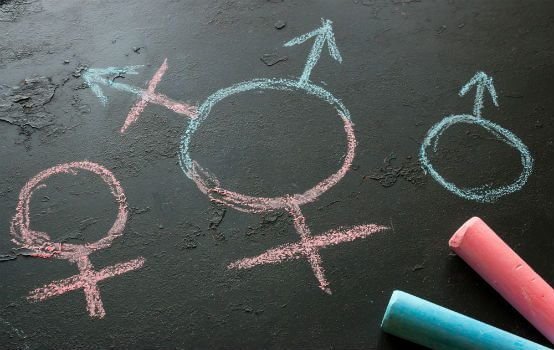Jarrod Hindman was determined to tackle the problem in 2006, when he was tasked with overseeing violence and suicide prevention as part of his position with the Colorado Department of Public Health. Having grown up in Colorado, Hindman’s interest was personal. In high school, he lost a friend and teammate to suicide. Still, when Hindman looked at the statewide data, he was surprised to find that the vast majority of suicide victims in Colorado, almost 80 percent, were adult men. At that time, almost all suicide intervention and outreach efforts were focused on adolescents, and they emphasized talking about feelings and not being afraid to ask for help. That approach, said Hindman, could be an active turn off for the population most at risk.
“We still really embrace that rugged individualism, cowboy mentality,” in the western U.S., said Hindman. If you are a man struggling with something, particularly an emotional issue, “the response is: ‘Pull yourself up by your bootstraps. Problem-solve on your own.’”
While Durango is noteworthy for its high suicide rate, the pattern reflects a broader national trend in which adult men are 3.5 times more likely than women to die by suicide, according to the American Psychological Association (APA). And suicide is just one of several negative health outcomes that disproportionately affect men. For example, despite having greater socioeconomic advantages, men’s life expectancy is almost five years shorter than women’s. The difference isn’t all biological, said Wizdom Powell, an associate professor of psychiatry at the University of Connecticut and chair of the APA working group on Health Disparities in Boys and Men. “If it were, then we then would see similar rates of premature death and mortality among men and boys of all racial and ethnic groups, and that is not the case.”

Scientists and non-scientists alike have known about men’s increased mortality for decades, and it’s often taken for granted that women tend to live longer. But the issue did not receive much attention until last month when the APA released the first set of guidelines aimed specifically at treating men and boys, having already published guidelines on treating women, LGBQ, transgender and non-binary clients, and people of various cultural backgrounds. The guidelines draw on three decades of research into “gender-role conflict” and “gender-role stress,” the psychological state and accompanying emotional distress that exist when restrictive definitions of gender limit a person’s well-being.
The new guidelines sparked immediate backlash on social media and in newspaper op-eds. Conservatives like Laura Ingraham accused the APA of “pathologizing” masculinity and stripping men of their essential manliness. In the academic realm, Steven Pinker, a professor of psychology at Harvard, criticized the guidelines for ignoring the biological factors — such as testosterone levels — that contribute to gender differences, and for downplaying the benefits of self-control and self-reliance.
And yet, the gulf that separates the various camps might not be as wide as the recent debate suggests. Fred Rabinowitz, who led the effort to develop the guidelines, said that the document seeks to support men who are “brave and strong and tough in difficult situations.” But, he adds, “when there is a situation that requires sensitivity, empathy, and communication, men should be able to shift gears and be able to do that as well.”
“Boys learn at a young age that there is one way of being a man, and when they deviate from that, they get punished,” said Matt Englar-Carlson, a professor of counseling at California State University, Fullerton. They are often told to “man up” and not to cry. If they don’t conform, said Englar-Carlson, boys risk being taunted with insults like “bitch,” “pussy,” and “little girl” — all of which associate emotion with weakness and femininity. As a result, adult men tend to bury their emotions. In fact, research suggests that when men are socialized to be rigidly self-reliant and strong, they are less likely to seek mental health treatment or medical care.
To better reach this group, the APA guidelines stress that doctors and health care workers should take a hard look at their own personal assumptions and biases about masculinity. “Health care providers may be primed not to talk about certain subjects with men,” said Powell. Studies have shown that some doctors, whether because of personal assumptions or time constraints, are far less likely to ask men about their mental health and family life. Powell, therefore, recommends “appointment maximization strategies.” That means packing as much as possible into each visit, including screening for depression every time a man or boy turns up at a primary care appointment. This doesn’t have to be intrusive or time consuming. It can take place via a 10-minute pen and paper questionnaire in the waiting room.
Psychologists, too, may need to rethink their approach. “Often men and boys don’t have the language to discuss their emotional, interior life,” said Rabinowitz, who frequently works with men with anger issues in group and individual counseling. “I try to use their language,” Rabinowitz said. He gives the example of a house painter he was seeing who was dealing with a breakup. “Instead of saying ‘That must have really hurt,’ I said something like ‘It must have felt like you fell from the second floor of a house.’ And all of a sudden he was like ‘Yeah, it fuckin’ does hurt like that.’”
Of course, men are not a unified block. Like women, they have other identities that intersect with gender to create their unique human experience. The APA guidelines, therefore, refer to “masculinities,” to account for the way that gender identity is shaped by factors such as race, class, and sexual orientation. African American men, for example, may be especially wary of the medical establishment due to a well-documented legacy of racism within American medicine. “It’s real and it’s also rational. Because those things did happen. And they are still happening today,” Powell said. Though the evidence is somewhat mixed, studies have shown that doctors have a preference for white patients and that these racial biases impact the treatment decisions and recommendations that they make, with people of color generally receiving lower quality care.
But these attitudes are not set in stone. For the past decade Powell has conducted several studies surveying African American men in barbershops and academic institutions around the U.S. about their experiences with the health care system and attitudes about masculinity. Her research showed that the more someone endorsed masculine norms and distrusted the medical establishment, the less likely they were to seek help from a medical professional. When the participants had positive experiences with the health care system, however, they tended to modify their opinion — “like any adaptive human,” Powell said. What seems to have the most impact, “is what’s happening in the here and now.”
Powell notes that, in some cases, masculinity norms can be leveraged to beneficial effect. For example, men who strive to be self-reliant might be more inclined to see a doctor if they view this as an act that enables them to care for their family.
This is in line with a treatment paradigm referred to as “positive masculinity,” which promotes the healthy, nurturing aspects associated with being a man — such as taking pride in being a protector and provider. “Masculinity itself may not be toxic,” said Englar-Carlson. “What makes it toxic is when men overconform, or when they have a rigid notion of what it means to be a man and cannot deviate when the situation requires it.”
Because boys are socialized not to cry or talk about their feelings, they may express their pain outwardly in ways that are destructive to themselves and others, said Christopher Liang, head of the Gender, Race, Inclusion, and Trauma lab at Lehigh University. “Of course, not all men who engage in violence are dealing with masculinity issues, but a lot of them just may be,” Liang said. The guidelines, then, “are about understanding the factors that shape boys and men in healthy ways and not so healthy ways.”
“That’s the real crux,” Liang added. “How do we help men be healthier for themselves and other people?”
In order to get men to open up, Rabinowitz says, it’s important to suspend judgment and adopt a neutral tone when discussing the violence that may have landed them therapy. Such men often feel guilty about their actions and build up strong psychological barriers and attitudes such as victim-blaming that help them avoid taking responsibility and dealing with painful feelings of shame. After getting men to open up about the emotions underneath their anger, which often covers up feelings anxiety or depression, Rabinowitz will then ask these men if their behavior ultimately got them what they wanted.
The answer is almost always no. Explosive outbursts eventually drive loved ones away, said Rabinowitz. With this understanding, clients begin to work on communication and coping strategies that can help them better identify and manage their emotions.
Back in Colorado, after discovering that the state’s suicides were overwhelmingly committed by adult men, Hindman decided to put his small amount of discretionary funding towards the problem. Thus was born “Man Therapy,” a suicide prevention campaign created by the Colorado Department of Health with outside partners. It aims to reach men by using humor to expose stereotypes around masculinity and therapy. The face of the campaign is a fictional character who resembles Ron Swanson, the stoic department head from NBC’s “Parks and Recreation.” He deadpans lines like “Did you know men have feelings too?”
Launched in 2012, Man Therapy was an immediate success — by some metrics. A preliminary internal report from 2014 found that visitors spent an average of six minutes on the site, compared to just 15 seconds on average for a typical website on the internet. When surveyed, half of all visitors said they were more likely to seek help after visiting the website. In 2016, the University of Maryland at Baltimore received a grant from the CDC to formally research the effectiveness of the program.
Elsewhere, other approaches are being rolled out. For instance, therapists are now being embedded within military units, where both men and women may experience trauma and other behavioral health issues, but also need to meet rigid expectations to be strong and battle-ready. Powell, who has worked with the military community, explains that the challenge is to prepare soldiers who can fight battles and then disarm themselves when they come home to their families and communities. She explains: “You don’t want to have to be ready for battle in your living room.”
Despite the controversy surrounding the APA’s guidelines, Powell notes that gender roles are already more fluid than they were a few decades ago. New generations, she said, “are starting to really push back on this mythical ideal of what it means to be a man, which really is not fully attainable by anybody. No one can be that man.”
Roni Jacobson is a freelance science journalist who primarily covers psychology and mental health. Her work has appeared with Scientific American, Vox, The New York Times, Vice, and The Atlantic, among other outlets. Follow her on Twitter at @RoniShayne
A version of this article was originally published on Undark’s website as “Psychologists Seek a Broader, Healthier Definition of ‘Masculinity’” and has been republished here with permission.
































